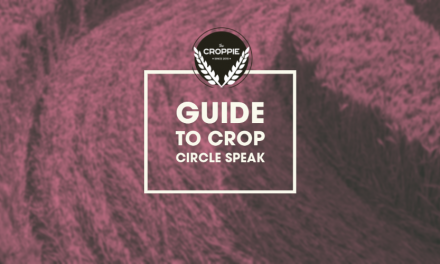
Dear Croppie: Why Do So Many Crop Circles Appear In Wiltshire?

Photograph by Nick Bull/Stonehenge Dronescapes
Given The Croppie has been online since 2015 you’d have expected an answer to this question by now. But, no, it’s not one that has been addressed in these pages before: Why is Wiltshire the epicentre of the crop circle phenomenon?
The Croppie appreciates there are two different answers to this conundrum. One is tied up in the paranormal, the other concerns the history books. Nobody here is going to tell you what you must or must not believe, so The Croppie will leave you to decide upon the more likely solution.
THEORY ONE
The paranormal explanation suggests Wiltshire is a very peculiar place where all sorts of high weirdness can be found. The landscape is strewn with an exceptional amount of ancient landmarks close to locations where crop circles are regularly found. Stonehenge, the Avebury stone circle, the Devil’s Den and Bratton Camp are just four examples. Some people believe these sites sit on ley-lines (or leys), a succession of straight landscape alignments. The origins of these alignments has been the subject of considerable debate, but one theory suggests leys carry some form of mystical ‘earth energy’; a force that our ancient ancestors recognised and respected enough to mark with burial grounds, river crossings, longbarrows and religious/ceremonial complexes. Believers in this theory suggest the Wiltshire area was an important meeting point of these leys. They ask whether the crop circle making force is attracted to ley-lines.

Barbury Castle, nr Swindon, Wiltshire. Photograph by Hugh Newman
Of course, crop circles are also linked to ufology. From late 1964 and into the following decade, the Wiltshire town of Warminster was at the centre of a UFO flap. Much of the strangeness was documented by the typewriter of local journalist Arthur Shuttlewood and included the appearance of ‘flattened … depressions’ in grass and cereal crops. Shuttlewood interpreted these as the landing marks of extraterrestrial craft, an association that was recalled in 1980 by the Wiltshire Times when a cluster of simple crop circles were found close to the neighbouring town of Westbury.
It is perhaps inevitable that there has been some overlap between the crop circles and ley-line phenomena. British ufologist Tony Wedd suggested extraterrestrials use leys as a means of navigation. Perhaps the apparent importance of the Wiltshire leys means there is an increased chance of UFO flaps occurring in the county (alongside the weirdness that tends to accompany the flying objects, including the crop circles)? Supporters of this idea note how the Warminster area is dominated by the longbarrow found on top of Cley Hill.
THEORY TWO
The second theory focuses upon very human crop circle makers. According to the confessions of Doug Bower and Dave Chorley, the pair began to make circles at some point between 1976 and 1978 in the Winchester area of Hampshire. With time, the men would begin to drive further afield to create their artworks, occasionally venturing into the Warminster, Westbury and Stonehenge areas of Wiltshire.
In a 1992 interview with Clas Svahn, Bower claimed he was aware other circle makers (possibly operating as UBI — United Bureau of Investigation) had begun to operate around the Avebury area of Wiltshire from 1987. The discovery of the work of similar ‘copycats’ at Cheesefoot Head (Winchester, Hampshire) the previous year prompted Bower and Chorley to leave their own message of ‘we are not alone’ in the same field as a resigned protest.

Tawsmead Copse, near Alton Priors, Wiltshire. Photograph by The Croppie.
The shift of the circles from Hampshire to Wiltshire continued in 1990 as the media, particularly the BBC, helped Britain go crop circle crazy. The appearance of the huge Alton Barnes pictogram (as later shown on the front cover of the Led Zeppelin Remasters album) was followed by the BBC and Nippon TV sponsored Operation Blackbird cropwatch. The ‘hoaxed ‘ formation at the beginning of Blackbird not only made fools of high profile cerealogists Colin Andrews and Pat Delgado; it proved to anyone of mischievous intent that humans were — with the right equipment — capable of making a crop circle.
Wiltshire would become the go-to destination for the aspiring crop circle maker. Not only were the eyes of the world on the county’s fields, the landscape was more advantageous than neighbouring Hampshire with large, quiet fields. It was also steeped in legend. Furthermore, if someone was going to make a crop circle then surely they wanted it to be seen? Warminster, Westbury, Swindon, Devizes, Stanton St Bernard, Pewsey and Alton Barnes all offered easily accessible hilltops where the circles could be viewed from above. And then there were the ancient sites around Stonehenge and Avebury. Given the quantity of tourists who visit both complexes, the circle makers’ work would be all but guaranteed to attract a significant amount of visitors.
The lure of Wiltshire has been so strong that The Croppie is aware of circle makers who relocated to the county, accompanied by locals who chose to add their own circles to the landscape. Even now, with many Wiltshire farmers cutting out new crop circles on sight, some circle makers would still rather work in Wiltshire than anywhere else.





